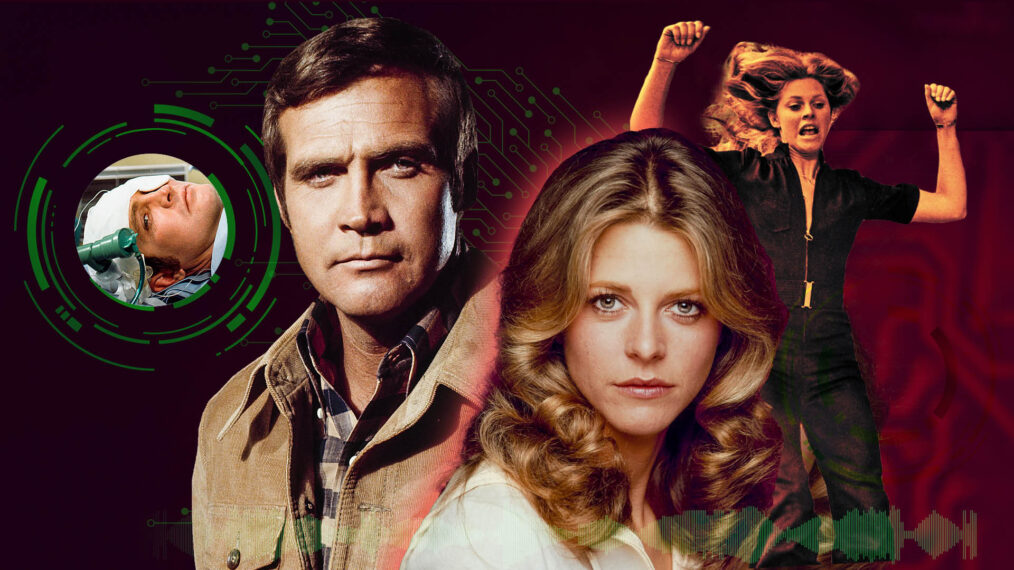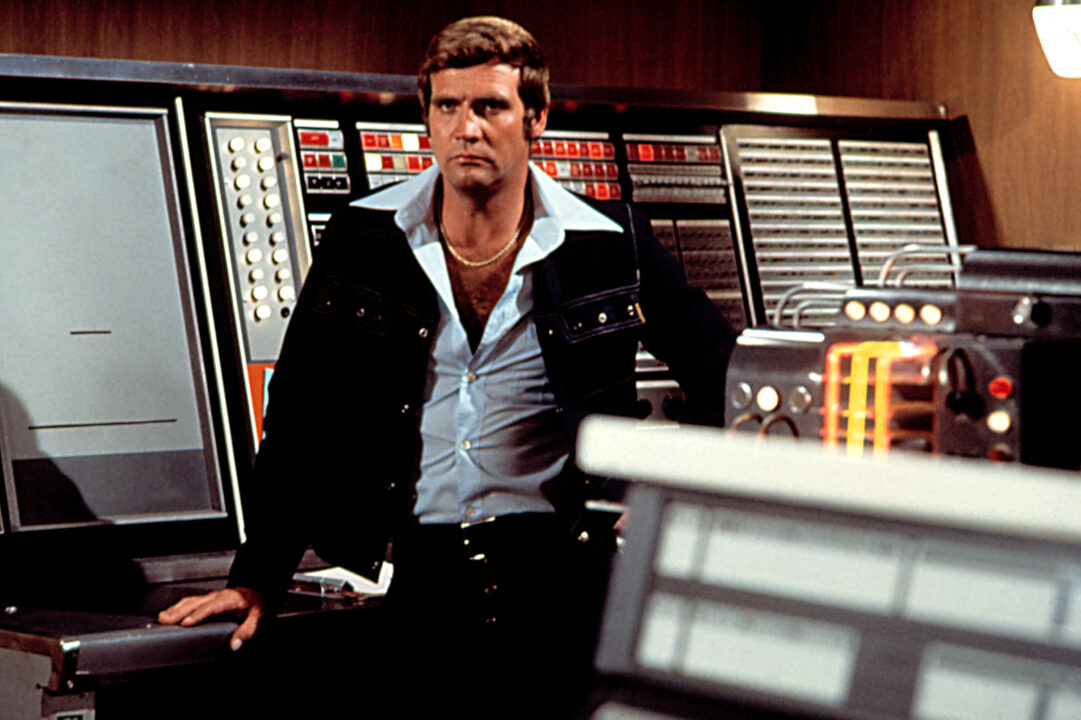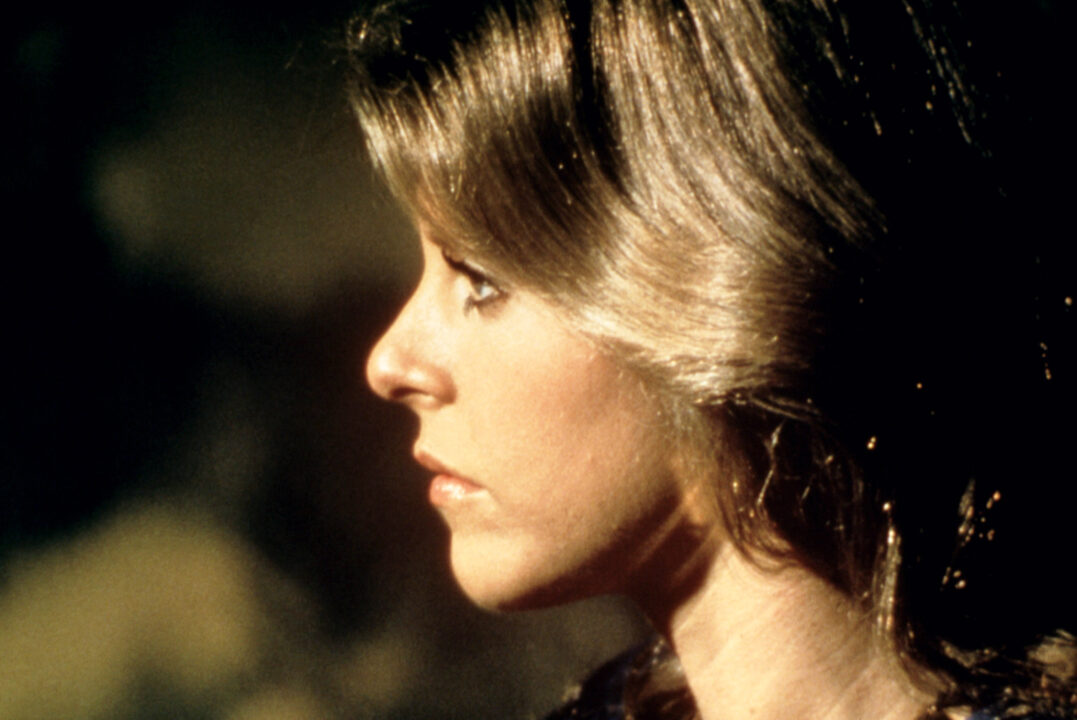‘The Six Million Dollar Man’ & ‘The Bionic Woman’ Everyones Favorite Bionic Couple

Perhaps because the story centers around a fateful crash, The Six Million Dollar Man has had a wacky trajectory, a high-tech jaunt into its own twilight zone.
First there were four popular novels by Martin Caidin, a science-themed writer in the vein of Michael Crichton who was fascinated with the idea of fusing man and machine with “bionic” body parts.
Caidin’s 1972 novel Cyborg was adapted loosely for a 1973 TV movie titled The Six Million Dollar Man; the show was so popular that two more made-for-TV Six Million Dollar Man movies were produced.

Everett Collection
Then came the TV series of the same name starring Lee Majors as astronaut and bionic tough guy Steve Austin. Austin is testing an experimental aircraft when it crashes. After saving his life, scientists “rebuild” Austin by implanting bionic versions of both legs, his right arm and left eye at a cost of $6 million. Running 60 mph, with the strength of a bulldozer and telescopic sight, Austin is “better … stronger … faster.” He is enlisted as a secret agent for the Office of Scientific Intelligence (OSI) and proceeds to take all comers.
The show was an instant hit. Fans were wild for technology-based superpower — a truly ’70s progression from fantasy superheroes of previous decades. They loved Austin’s “slow-motion” action sequences (with accompanying electronic sound effects), even though producers said they went to slo-mo because the effects looked too hokey in real time.

Everett Collection
Along the way came love. (Isn’t there always?) A two-part episode in Season 2 titled “The Bionic Woman” introduced Lindsay Wagner as Jaime Sommers, a pro tennis player who rekindles an old romance with Steve Austin but then suffers a skydiving accident. Hoping to save her, doctors implant similar bionic devices into her as well, but she dies when her body “rejects” the implants. But her character was so popular that she was brought back in her own series, The Bionic Woman, still starring Wagner. In her survived form, Sommers teaches middle school by day and runs missions for the OSI by night. The show was so popular in the U.K. that it’s still the only sci-fi TV show to capture the No. 1 ratings spot.
Both series were canceled in 1978, though they were running on different networks. But that event just began a weird afterlife that continues to this day.
Steve Austin and Jaime Sommers (still played by Lee Majors and Lindsay Wagner) returned in three subsequent made-for-television movies: The Return of the Six Million Dollar Man and the Bionic Woman (1987); Bionic Showdown: The Six Million Dollar Man and the Bionic Woman (1989) (with Sandra Bullock in an early role as a new bionic woman); and Bionic Ever After? (1994) in which Austin and Sommers finally marry.

© Gallant Entertainment/Courtesy: Everett Collection
Things might have rested there, but this ship can never quite properly take off or land. The very long second life of The Six Million Dollar Man picks up in 1995 with Universal Pictures developing a script with comedian and comic book writer Kevin Smith but nothing comes of it, along with several other failed attempts including a 2002 comedic version with Jim Carrey, a 2006 version with Richard Anderson (who played Oscar Goldman in the TV series), and a 2014 project with Mark Wahlberg starring and Peter Berg directing, and then Damian Szifron directing, and then Travis Knight directing. But still nothing has materialized.
Who knows if Steve Austin will ever see the light of screen day again, but something tells us neither this superhero — nor his fans — will ever give up.

